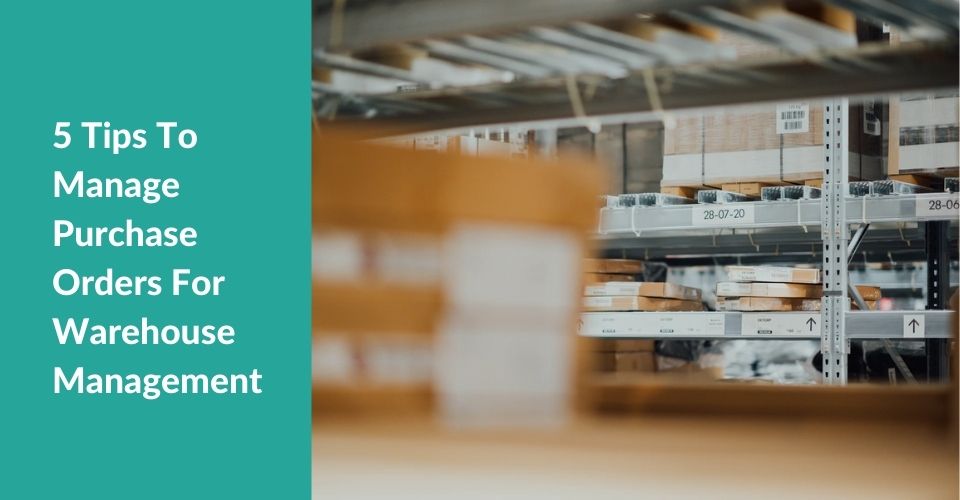A purchase order should be created whenever you acquire products for your retail company to sell. While it’s easy to overlook this documentation with long-term suppliers, this document has many more advantages for a retail firm than you may realize. Easy as it may sound, many businesses are still struggling with purchase orders. In this blog, we will give you 5 tips to manage purchase orders efficiently for warehouse management.
Overview
What is a purchase order?
A purchase order (PO) is a document created by a business that wishes to buy products or services from a provider. It acts as an official request, outlining the essential personal information, quantity of goods, and possible price ranges. The company thus sends it out, and the supplier either accepts it, denies it, or asks for adjustment.
Therefore, a purchase order becomes legally binding if the supplier agrees to it. The firm that sent it is responsible for paying an invoice for the agreed-upon amount, and the vendor is responsible for fulfilling the request.

5 tips to manage purchase orders efficiently
Now that you know what purchase orders are, let’s discuss the 5 tips to improve this process as a retailer.
Specify the PO guidelines and stages
Perhaps the most basic thing you can do to improve your purchase order management is to establish a PO guideline. It should include the requirements for a qualified purchase order, as well as the steps needed to complete an order. Your staff members should understand this guideline and the stages needed to finish it. This can prevent mistakes in the future and ensures a smooth-running purchase order processing.
Frequently review the PO process
If you are running a retail business with other employees, make sure that your PO process is reviewed frequently. This means that you should get feedback from different departments, such as the warehouse or sales team. This step will help you identify the problems in your PO process and make a timely adjustment. Moreover, you can also consult the opinion of your customers who you work directly with. They might have the most constructive feedback to improve your purchase orders management.

Use POS or MSI systems
It would be beneficial to use a centralized database for your purchase orders. Your company may save time by automating your purchase orders with a Point Of Sale (POS) or Multi-Source Inventory (MSI) system, such as ConnectPOS. These types of systems often provide powerful tools to handle your purchase orders, namely:
►►►► Please visit our products: digital banking, situation analysis, Shopify markets, Vietnam Photography Tour, Photography Tour Guide Viet Nam, supply chain operations management, fintech ai, Multi Store POS, Woocommerce POS, Mobile POS, White label POS, POS Reseller, Beauty Supply Store POS, Retail POS and Vape shop POS
- Automatically generate purchase orders when a certain threshold is reached
- Organize cross-warehouse internal deliveries
- Create a recurring order
- Create and store purchase-related documents
- Keep track of the order’s status and phases

Be timely
Purchase orders should all be sent on time. It’s critical to get these documents into the hands of your partners since they explain the terms of the agreement and safeguard your company. If you face a delay, respectfully inform your partner in a timely manner. Furthermore, providing documents on time demonstrates professionalism, which will instill confidence in your partners as well.
Allow permission to PO system for staff members
If you plan to have a POS or MSI system, it is important to allow the right permission for staff members. They are the main sources you have to manage purchase orders. Being able to access PO data, such as PO status or delivery information can be beneficial for your customer service. For example, if your client wants to ask for the status of their PO, your members can answer them correctly and promptly.

Wrapping up
If you want to know more about ConnectPOS and our MSI with powerful purchase orders tools, don’t hesitate to contact our team for the best support. Above all, we hope that you can more or less find some inspiration for your PO process after reading this blog.
